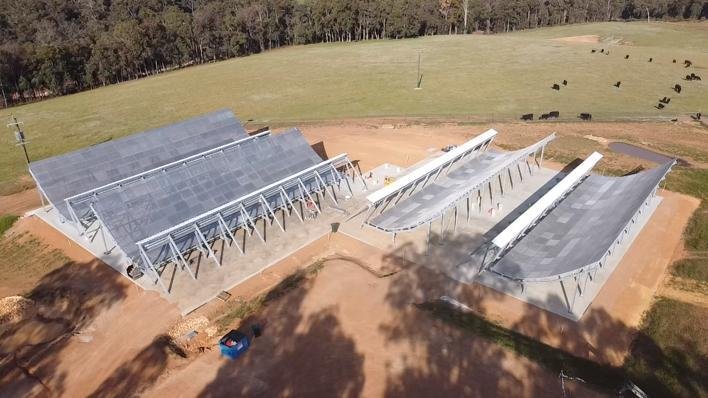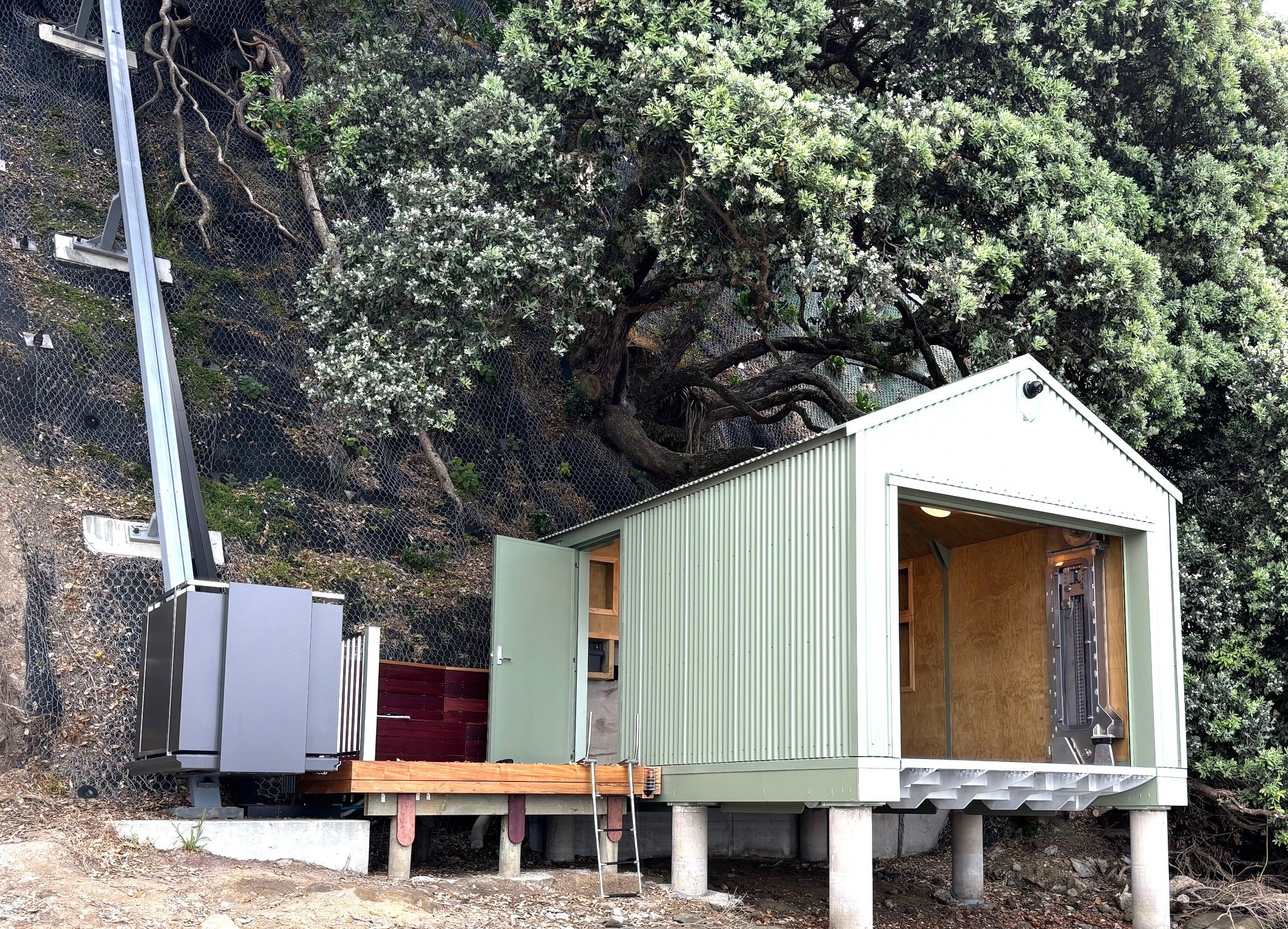


















Client: LeoLabs
Project Director: Julian Ramsay
Project Description:
LeoLabs is based in Menlo Park USA, and their NZ based radar is the first of its kind in the world and forms part of a network of phased-array radars that enable high-resolution data on objects in the lower earth orbit, including objects as small as 2cm in diameter. The intent of the radar is to offer foundational mapping data and services to mitigate the risks of collisions.
Project challenges included the balance of minimising radar shadowing structure with the requirement for a very low operational movement tolerance under wind, snow, seismic and thermal stresses, working to extremely precise low construction tolerances, construction in remote location using components sourced from different countries, durability issues associated with galvanic series of multiple materials, Revit modelling of complex array curves and appropriate references, and site selection appropriate for minimising effect on landscape and water courses.
This project is a huge addition to the rapidly growing NZ space sector which helps generate approximately $1.8 billion NZD of revenue in NZ each year.
Ruamoko won the coveted Gold Award at the 2020 Ace NZ Awards for this project. More detail on this award can be found here.
Founder & Chief Technical Officer of LeoLabs Michael Nicolls described Ruamoko’s involvement:
“Ruamoko was instrumental to the success of the Kiwi Space Radar. Prior to working with Ruamoko, LeoLabs struggled to find a structural engineering firm that was able to accept the unique challenges of this project: tight engineering constraints, budgetary requirements, and schedules. Through the design-engineering phase, Ruamoko took the time to deeply understand the goals driving the structural requirements, and in doing so were able to develop unique solutions to the project. Ruamoko’s design met LeoLabs’ performance needs, and did so within the aggressive budgetary and schedule constraints presented. As a result of the close working relationship established during the development and construction of the Kiwi Space Radar, LeoLabs expects to work closely with Ruamoko as it scales its solution to other radar sites around the world.”
More information on the LeoLabs phased array radar can be found here.
Information about Ruamoko’s involvement with MBIE on this project can be found here.
Client: LeoLabs
Project Director: Julian Ramsay
Project Description:
The Costa Rica Space Radar is the fourth radar in LeoLabs global space radar network that enables high-resolution data on objects in the lower earth orbit, including objects as small as 2cm in diameter. The intent of the radar is to offer foundational mapping data and services to mitigate the risks of collisions.
Following on from the award-winning Kiwi Space Radar project, Ruamoko Innovation was responsible for the structural design of the next phase of radar shape in Costa Rica. Project challenges included the requirement for a very low operational movement tolerance under wind, snow, seismic and thermal stresses, working to extremely precise low construction tolerances, construction in remote location using components sourced from different countries, durability issues associated with galvanic series of multiple materials.
More information on the LeoLabs phased array radar can be found here.
Client: Confidential
Project Director: Julian Ramsay
Project Description:
Modular design in remote global location for aerospace activities.
Client: LeoLabs
Project Director: Julian Ramsay
Project Description:
The Western Australian Space Radar (WASR) is the sixth radar in LeoLabs global space radar network that enables high-resolution data on objects in the lower earth orbit, including objects as small as 2cm in diameter. The intent of the radar is to offer foundational mapping data and services to mitigate the risks of collisions.
Ruamoko Innovation was responsible for the structural design of the WASR. Project challenges included the requirement for a very low operational movement tolerance under wind, snow, seismic and thermal stresses, working to extremely precise low construction tolerances, construction in an extremely remote location using components sourced from different countries, durability issues associated with galvanic series of multiple materials.
More information on the LeoLabs phased array radar can be found here.
Client: LeoLabs
Project Director: Julian Ramsay
Project Description:
The Azores Space Radar is the fifth radar in LeoLabs global space radar network that enables high-resolution data on objects in the lower earth orbit, including objects as small as 2cm in diameter. The intent of the radar is to offer foundational mapping data and services to mitigate the risks of collisions.
Ruamoko Innovation was responsible for the structural design of the Atlantic space radar. Project challenges included the requirement for a very low operational movement tolerance under wind, snow, seismic and thermal stresses, working to extremely precise low construction tolerances, construction in an extremely remote location using components sourced from different countries, durability issues associated with galvanic series of multiple materials. The exposed site required significant wind control by means of a semi-perforate fence to ensure wind loads would not affect the performance of the structure.
More information on the LeoLabs phased array radar can be found here.
Feasibility and ground-based infrastructure design of vertical launch facilities, including site layout and launch and blast effect studies on structures and surroundings.
Client: University of Canterbury
Project Director: Julian Ramsay
Project Description:
Ruamoko Innovation designed the structures that house both the Primary and Secondary Data Centres at the University of Canterbury. This work included a thorough investigation of importance levels and service requirements, as well as strengthening of existing buildings, securing of servers and processors including the famous IBM Blue Gene supercomputer in the Primary Data Centre (which was built prior to and which remained functioning throughout the 2010 Canterbury earthquakes).
Two Blue Gene/P racks contain 4096 processor cores each and each use a maximum of 45 kilowatts of power. At the time of installation, this ranked among the top 25 supercomputers used in academia in the world, and forms a key component of critical medical research by using computer power not previously available.
Client: Antarctica New Zealand
Project Director: Cameron MacPherson
Project Description:
Ruamoko Innovation has worked closely with Antarctica NZ on the design of a lifting boom for a Pisten Bully PB100 Vehicle. The boom carries sensitive monitoring equipment to carry out research into ice thickness to monitor the affects of global warming.
Design considerations included transportability, material-temperature issues, fabrication, dynamic loads.
Project Director: Julian Ramsay
Project Description:
Ruamoko Innovation have been involved in design and strengthening of coastal defense installations.
Equipped with S-band technology, This radar in development is located in Tierra del Fuego, Argentina.
Te Argentina Space Radar will cover a significant hole in the world’s space traffic safety systems by filling in LeoLabs coverage of the Southern Hemisphere.
Client: Confidential
Project Director: Julian Ramsay
Project Description:
Highly automated structures feature elevator access, automatic opening doors, tilting floor that becomes a ramp for fully-automatic rapid RIB launching and retrieval. Also features automatic overhead storage by winch systems.
Construction was all-aluminum and modular to ensure structures could be erected on remote site be floated and barged into place.
Client: LeoLabs
Project Director: Julian Ramsay
Project Description:
Scout is a containerized S-band Direct Radiating Array radar system that can be easily transported for rapid deployment to any location worldwide in response to dynamic Space Domain Awareness missions including monitoring foreign launches.
Scout radars can be deployed solo or in dense networks depending on mission requirements. Scout is a game changer for advanced SDA. Mobile radars offer timely proliferation and the ability to quickly adapt to changing threats by deploying at any place at any time.
Client: Dark Sky Project
Project Director: Grant Wilkinson
Project Description:
Combining cutting edge 21st century technology with 19th century technology, Ruamoko Innovation provided an incredibly innovative and bespoke friction-damped, spring-loaded, base-isolated system to support one of the world’s most famous Victorian telescopes.
The 18-inch refractor was created in 1894 by renowned Pennsylvanian optician John Brashear, and was fitted in an eight-metre long tube atop a 5.4-metre high pier and equatorial mount fabricated by the illustrious Warner & Swasey Co of Cleveland, Ohio.
Once housed at the University of Pennsylvania, the telescope now sits at the Dark Sky Project Base in Takapō (Lake Tekapo).
Hull optimization using computational fluid dynamic simulations and finite element analyses to optimize hull and transom design for custom-manufactured inboard, outboard, and jet-pump hull designs.
Project Director: Julian Ramsay
Project Description:
Ruamoko Innovation were engaged for the foundation design and structural peer-review of the Musco light towers on this exciting project. This involved a wind study and fatigue analysis of the 50m high tower light poles supported on concrete plinth foundations anchored with steel screw-piles.
Sculptor: Kathleen Scott, Mark Whyte
Project Director: Grant Wilkinson
Project Description:
This iconic statue was carved by Captain Robert Falcon Scott's widow Kathleen in 1916 to commemorate her late husbands ill-fated journey to the South Pole in 1912.
The 2011 Canterbury earthquakes toppled the sculpture, and Ruamoko Innovation’s innovative remedial strengthening solution involved a carbon-fibre remedial detail to the legs, as well as an innovative spring-loaded rocking plinth connection at the base.
Sculptor: Neil Dawson
Project Director: Grant Wilkinson
Project Description:
At 20m in diameter, "Fanfare" is one of New Zealand's largest work of public sculpture. The bold, contemporary, large-scale sculpture with 360 rotating fans sits at the northern approach to Christchurch directly adjacent to State Highway One. Illuminated with varying colours, this striking sculpture is sure to become an iconic visual connection to Christchurch city.
Sculptor: Neil Dawson
Project Director: Grant Wilkinson
Project Description:
Set against the skyline of Shanghai, this elegant piece by one of Christchurch's most prominent sculptors contrasts starkly with its surroundings.
